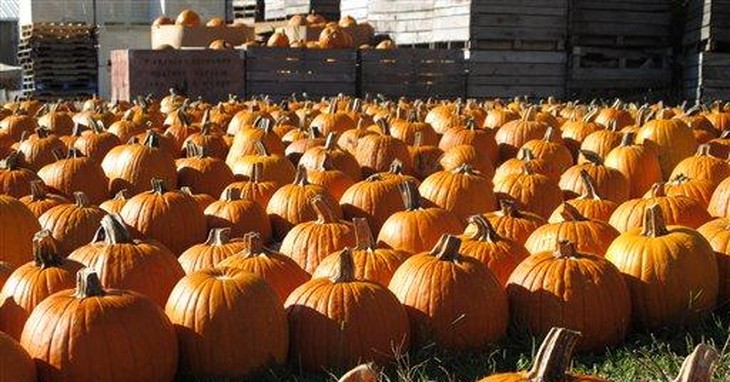While trendy this month, the fact is pumpkin beers are an American original.
The marketplace these Autumn days is awash with the annual inundation of pumpkin spice products. I recently covered some of the more ridiculous items being brought to store shelves, as what was once seen as a novelty has swelled into a definitive industry worth hundreds of millions every year.
The beer aisle also reflects this tendency, as Fall brings out a number of breweries that offer up styles that have pumpkin in the bottle, or at least on the labels. It seems a natural move, both to cash in on the craze and also to offer up beers that pair with some of the foods that come about this time of year. But the pumpkin beer marketplace is a divisive one, and this is partly due to misconceptions.

Not A Trend, An Originator
There is no denying that pumpkin beers have experienced an explosion of offerings in recent years. Starbucks is generally credited with launching the current pumpkin spice rage in 2003 and in the interim a growing list of brewers have rolled out their variations on a pumpkin-based brew. Seasonal popularity was an inspiration, but this is not a creation born out of coffee madness.
Beers and ales made with pumpkin as a base of their wort are among the oldest in America’s history. Upon arrival, the earliest settlers were faced with a scarcity of the grains normally used for beer production, so those seeking to establish a foundation of brewing in the new land had to make do with what was available. The large gourds were used as the basis of the emerging zymurgy in the colonies.
As far back as 1771, we find a reference to this in The Oxford Companion To Beer, where it mentions that settlers lacking in barley and other grains were using “pompion” as the basis of a fermented brew mixed with hops to make a malted version of ale.
Let the Pompion be beaten in a Trough as Apples. The expressed Juice is to be boiled in a Copper a considerable Time and carefully skimmed that there may be no Remains of the fibrous Part of the Pulp. After that Intention is answered let the liquor be hopped cooled fermented &c. as Malt Beer.
This made sense for brewers as pumpkin is rich in both the sugars and starches that aid in the fermentation process. Pumpkin persisted in being included for a few decades but as the standard grains became more available in the colonies it was reduced as more of an adjunct product in the wort, and then as the 1800s wore on its use became less of a function, before fading entirely as a component.
This was largely due to the fact that brewing progressed rapidly in the new states, so the beer-making evolved from needing pumpkin, to using it more traditionally, and eventually fazing it out entirely. It would be more than a century before the Fall holiday gourd would be reintroduced to beer vats with any kind of diligence

The Modern 6-Pack-O-Lantern
Many a beer drinker has become resistant to this style, looking at it as nothing more than a cash-in attempt on the seasonal movement. While this is sure to be the case with some beers released with the spiced profile – using cinnamon, nutmeg, cloves, and/or other similar flavors – there are those reaching back to the originators of American brewing with the gourd at the forefront.
This styling was reinvigorated initially in the 1980s by one of the forebears of the modern craft brewing explosion. Buffalo Bill’s Brewery, in Hayward California, is one of the sources credited with launching the microbrewery excitement in this country, and their pumpkin ale created a stir to the extent that it gave the brewery a share of fame. This was roughly two decades ahead of Starbucks making this a fashionable sipping ingredient.
At that time a few select brewers tried their hand at the throwback style, but after the turn of the century, it quickly became something many beer makers were producing by rote. Whether they used pumpkins in earnest or resorted to a mixture of the expected spices into their mixture, Pumpkins began to sprout as freely on beer labels as they do in the fields. The market for this has been as rich as some of the brews.
Shipyard Brewing makes a rather potable version and it is usually among the top-selling labels in its profile. This goes for many a brewer this time of year. It has come to a point that if the seasonal pumpkin offerings are not a sales leader they are at least a healthy addition to their portfolio in the Fall. And, it may or may not come as a surprise as to why.
Each year it is a common theme on social media to see ladies announcing their glee at the return of pumpkin spice lattes at their favorite coffee bistro. As it stands, those lasses are also a key driver behind the popularity of this beer style.
Is this really a surprise?
As the gals cheer the return of pumpkin spice season, look who it is taking the edge in purchases of these beers. pic.twitter.com/yXLdCUCdaH— Brad Slager: Distracted at the Auto Show (@MartiniShark) October 9, 2022
That said, it appears that this is a fixture in the beer market that will remain. Just take heart (liver) that if you succumb to sipping these brews this time of year you are not necessarily giving in to seasonal hype; you are indulging in some serious American beer history.















